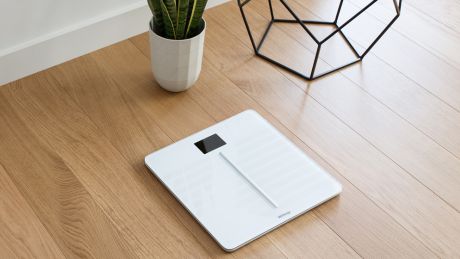The Truth About Weight Loss
There’s more to weight loss than losing weight

The start of every health kick can be a glorious time, with your motivation at its highest and the fitness gains at their easiest to come by. Your muscles might be aching, and your diet could be missing a few unhealthy favourites, but the weight will be dropping off like nobody’s business.
At some point, however, you might find that whatever efforts you make in the gym or the kitchen do not result in any further losses when you step on the scales. Your weight plateaus, or perhaps even nudges slightly upwards. Obviously, this can be the ultimate motivation killer if your main goal is weight loss, but a simple scales reading can be misleading when it comes to your general health.
More important than how much you weigh is your body composition – namely how much of your body is made up of fat, muscle, bones, water, assorted organs, and so on. Some of these you can’t do much about – it doesn’t matter how much you try, you’re unlikely to shave any weight off your liver without resorting to some extremely risky behaviour. It’s still good to know what’s going on with all your insides, but the key two areas of body composition you can affect are your body fat and muscle mass.
Reducing body fat is often the main goal of people’s plans when they embark on a new exercise regime and/or diet, and any early weight loss is a result of achieving that goal. However, when weight loss plateaus it doesn’t necessarily mean that you’ve stopped lowering your body fat percentage. It could simply mean that you’re increasing your muscle mass at the same time. No net weight loss, but a far healthier body composition.
An extreme example often used to illustrate the deficiencies of simply relying on weight as a guide to health is comparing the Body Mass Index (which is based on height and weight, with no accounting for body composition) of a professional rugby player with an obese person. Both might end up with a matching BMI score, but the muscle-bound rugby hulk is clearly in better shape in terms of their overall health.
Even if you never reach the rippling physique of a Jonah Lomu in his prime, you might also suffer from misapprehensions about your health and the effectiveness of your gym work if you only use overall weight as a guide to your progress.
The issue is that muscle is not heavier than fat, but it is denser. This means it takes up less space to weigh the same amount as fat, so your body shape might be changing for the better even if your total weight is the same after weeks of working out.
Body composition is also important when it comes to the type of fat you have. Visceral fat, which accumulates around your organs in the mid-section, is the most dangerous kind, in that a large quantity of it is linked with an increased risk of all kinds of problems including heart disease, several cancers and type 2 diabetes. A relatively slim physique with a pot belly is therefore nothing to boast about, you need to shift that midsection bulk rather than just focussing on your overall weight.
The good news is that visceral fat is the first stuff you’ll shift when you start exercising. Even if you can’t see the fat itself, you can monitor your progress by measuring your waistline regularly. Keeping tabs on your waist-to-height ratio (WHtR) is good practice all round if you’re on a fitness drive, as it has been found to be a better indicator of obesity-related health risks than simple weight or BMI measurements. To see if your ratio is unhealthily high simply grab a piece of string, use it to measure your height then fold it in half. If it doesn’t fit around your waist, then your ratio is in bad shape, and it’s time to start slimming.
There are also plenty of more precise ways to get a handle on your body composition, from the humble pair of callipers to smart scales. With callipers you pinch the skin and measure the fold in at least three locations on your body. Then plug those numbers into an online calculator to get an idea of your body fat. The number itself might not be incredibly accurate, but consistently measuring in the same way with callipers over time will allow you to track changes in your body composition.
For their part, smart scales such as the Withings Body Cardio will provide the most in-depth and accurate look at your insides you can get outside of a hospital, telling you your body fat, muscle mass, water percentage and bone mass, along with your actual weight. In terms of practical information about how your efforts to improve your fitness are going, it’s a huge step up from standard scales.
Get the Coach Newsletter
Sign up for workout ideas, training advice, reviews of the latest gear and more.

Nick Harris-Fry is a journalist who has been covering health and fitness since 2015. Nick is an avid runner, covering 70-110km a week, which gives him ample opportunity to test a wide range of running shoes and running gear. He is also the chief tester for fitness trackers and running watches, treadmills and exercise bikes, and workout headphones.

